Glass from R - Z
R - Raw materials
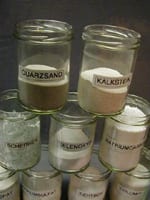
R for raw materials for the batch for glass production. There are up to 1000 different recipes today - depending on what the glass will be used for later.
More glass under R:
Raw material batch plant of the company Zippe, Wertheim (display panel), tubes, test tubes
S - Studio glass

Under S for Studio Glass, the Wertheim Glass Museum shows a small selection from its "International Studio and Lamp Glass Collection" (since 1976).
Studio glass art began in the 1960s with the invention of the studio furnace (daily quantity of 60 - 80 kg of glass). Independent of the large melting furnaces, glass artists could now process functionless and purposeless glass into independent works of art in their own studios.

Picture above: Glass object by Rachel Woodman, England 1987
Picture below: Parsifal by Claude Wetzstein for Daum, Nancy/France, 1975
T - Textile glass fibre from Wertheim

T for textile glass fibres are produced by the Johns Manville company in Wertheim (until 1971: Schuller GmbH). Pellets are used as raw glass. Finished textile glass products are: Glass fabrics, glass fleece, glass fibres, glass fabric wallpapers, glass fibre needle mats, filter fibres, porous micro glass balls, skateboards and snowboards and many more.
U - Uranium glass
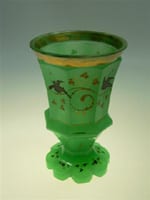
Since the 19th century, U for uranium glass has been produced not only in France, England and the USA, but above all in the Bohemian glassworks. It is from there, more precisely from Franz Xaver Riedel (1782-1844), that the colour names "annagelb" and "annagrün" or "eleonorengrün", named after his daughters Anna and Eleonore, still commonly used today, originate.
V - Vacuum Vessels
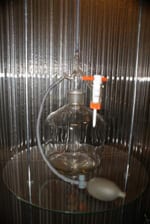
V like vacuum vessels such as this volumetric instrument from the Brand company in Wertheim have their origins in the 17th century. Experiments with the barometer invented by Evangelista Torricelli (1608-1647), a device for measuring air pressure, and other glass measuring instruments led to research into air and other gases and turned chemistry and physics into a "measuring" science.
W - Weighing glasses
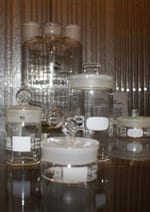
W for Weighing Glasses made of temperature-changing borosilicate glass are used, among other things, for chemical and biological purposes in the laboratory. They have been produced in Wertheim since 1950: initially in the Wertheim glassworks (1950 - 1994), today by various companies in the Wertheim special glass industry.
More glass under W:
Woulf's bottle
W - Scientific Glass Cabinet
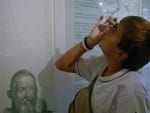
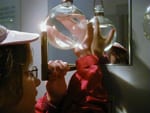
W for Scientific Glass shows the use of glass in science and industry in the Scientific Glass Cabinet in the Kleines Haus:
13 stations of renowned scientists such as Galilei, Torricelli, Newton, Fraunhofer or Paxton show how glass has developed since the 16th century as a scientific auxiliary instrument - cobbler's ball, spectacles, telescope, microscope, prism - into today's indispensable material for science and industry.
Is the hand behind the water-filled glass ball getting bigger or smaller?
X - Xenon lamp
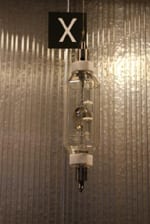
X like xenon lamps are used, among other things, as light for car headlights or in cinema projection equipment such as the xenon lamp in the glass museum. In contrast to the light of an incandescent lamp, the light of a xenon lamp appears colder due to the high colour temperature, but is brighter despite lower power consumption.
Y - fluorescent tube letter
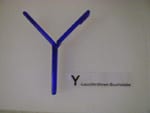
Y like Y light tube letter are used in advertising.
Fluorescent tubes were one of the products of the Wertheim glassworks from 1950 - 1994. Today, glassblowers are trained in the production of fluorescent tubes, among other things, at the Wertheim Glass College. This Y-letter was made by students of the glass school especially for the Wertheim Glass Museum.
Z - Teeth
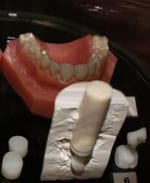
Z like teeth made of glass, or more precisely glass ceramics, look deceptively similar to "real" teeth and are increasingly in demand:
Teeth are made of glass:
translucent like real teeth
match the natural tooth shades
durable
Z - Zeiss lens
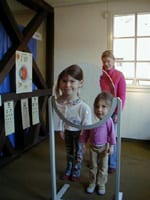
Z wie Zeisslinse is the largest lens in the glass museum (58 cm, magnification 3x) and shows visitors young and old that you can certainly have fun with glass.